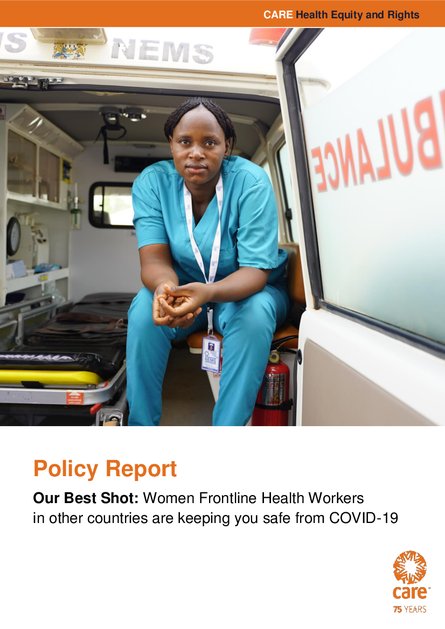
Since COVID-19 started, essential workers in hospitals have gotten much well-deserved attention as heroes who have helped control and manage the epidemic, care for the sick, and lose their lives serving others. Those heroes in health centers are only part of the story of how we’ll end COVID-19. Less recognized, but no less important, are the 3.5 million semi-formal and informal health workers around the world who serve the patients at the “last mile” of delivery. iv At least 70% of these health workers are women - who are risking their lives to get vaccines, services, and supplies to the most underserved and at risks populations in the world.
This report offers recommendations for global leaders to ensure this workforce is protected, including:
• Invest global funding in a fast and fair global vaccine rollout. High-income countries, donors, development banks, and national governments need to invest in comprehensive vaccine delivery. This investment has to include not just the money invested per dose of vaccine, but also an average of $5.00 in preparation and delivery for every $1 in vaccine. COVAX and WHO need to include the full costs of delivering vaccines, including all health workers—formal and informal— as part of their costing models and advocacy asks.
• Protect, pay, and value (women) frontline health workers. Out of the $5.00 in delivery costs, $2.50 has to go to equipping, paying, training, and supporting frontline health workers (at least 70% of whom are women). That includes ensuring they are first to receive the vaccine when available in their country and provided adequate personal protective equipment. It also includes ensuring equitable pay, and safe and supportive working conditions for women health workers on the frontline of COVID-19 response, including childcare, hazard pay, and funds for health-related expenses.
• Invest in women leaders. Ensure women, especially women frontline health workers, have meaningful roles and voice in leadership in shaping vaccine roll out, policies and programs at all levels.
• Start immediately to build national vaccine readiness and strengthen health systems so they are prepared to pivot quickly to fast and fair vaccine delivery, once doses are available.